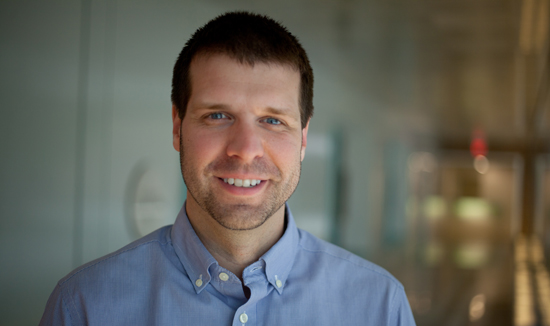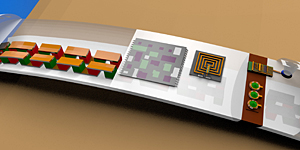Developing the wireless component for personalized health devices
The program aims to create wearable systems that monitor a person’s environment and health in search of connections between pollutants and chronic diseases.

 Enlarge
Enlarge
Prof. David Wentzloff will be developing the wireless component for the next generation of personalized health devices as a member of a new 5-year, $18.5M NSF Nanosystems Engineering Center for Advanced Self-Powered Systems of Integrated Sensors and Technology (ASSIST), led by North Carolina State University.
The program aims to create self-powered wearable systems that simultaneously monitor a person’s environment and health, in search of connections between exposure to pollutants and chronic diseases such as asthma. David will also develop the electronics for the prototype wireless health monitors in collaboration with Prof. Benton Calhoun of the University of Virginia.

 Enlarge
Enlarge
One of the goals of the ASSIST program is to combine secure data processing and communication capabilities on a platform that can operate for long periods of time. Since the device will be worn by patients, the device will be designed to be comfortable to the wearer and as unobtrusive as possible. Some of the devices could be worn on the wrist.
Prof. Wentzloff’s research interests mesh well with the goals of the center. He has been focused on integrated circuit design for adaptable wireless communication systems for both high-performance and energy constrained applications. This includes integrated power conversion, power management techniques, scalable RF, analog, and mixed-signal circuit design, cognitive radios, and networking. A special interest of his has been developing wireless communication for body area networks.
David earned his bachelor’s degree in electrical engineering from the University of Michigan, and his master’s and Ph.D. degrees from MIT. He received a 2009 DARPA Young Faculty Award to facilitate and extend wireless 3D communication among a stack of die, and his student was a winner in the 2011 DAC/ISSCC Student Design Contest for their clock harvesting receiver designed for low power wireless sensor nodes. He is Principal Investigator for an NSF project to develop and disseminate a complete wireless sensing and computing platform that integrates an imager, signal processing and memory, temperature sensor, CMOS timer, wireless communication, battery, and solar cell in a one cubic mm volume. He directs the Wireless Integrated Circuits and Systems Group.
 MENU
MENU 
